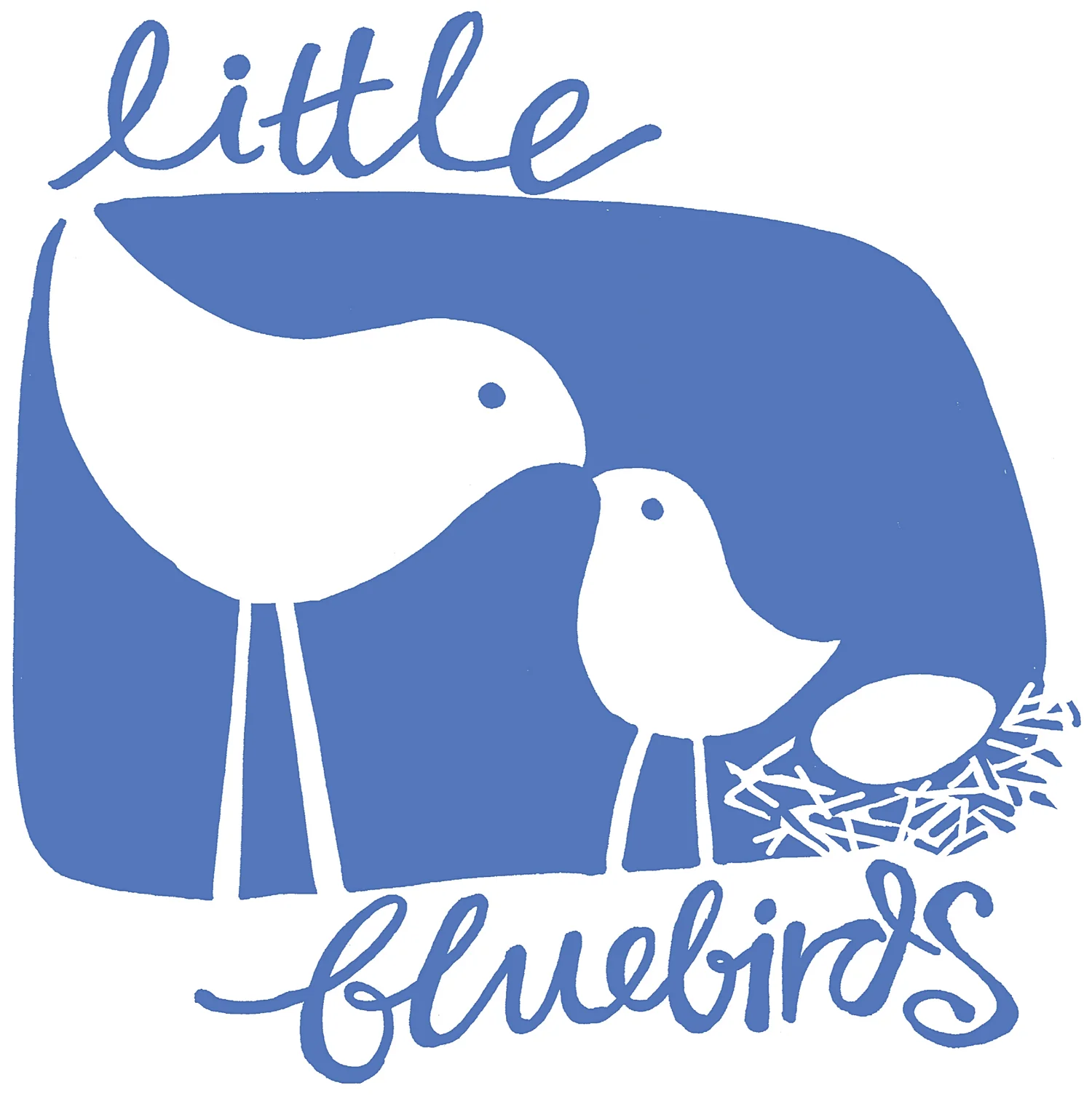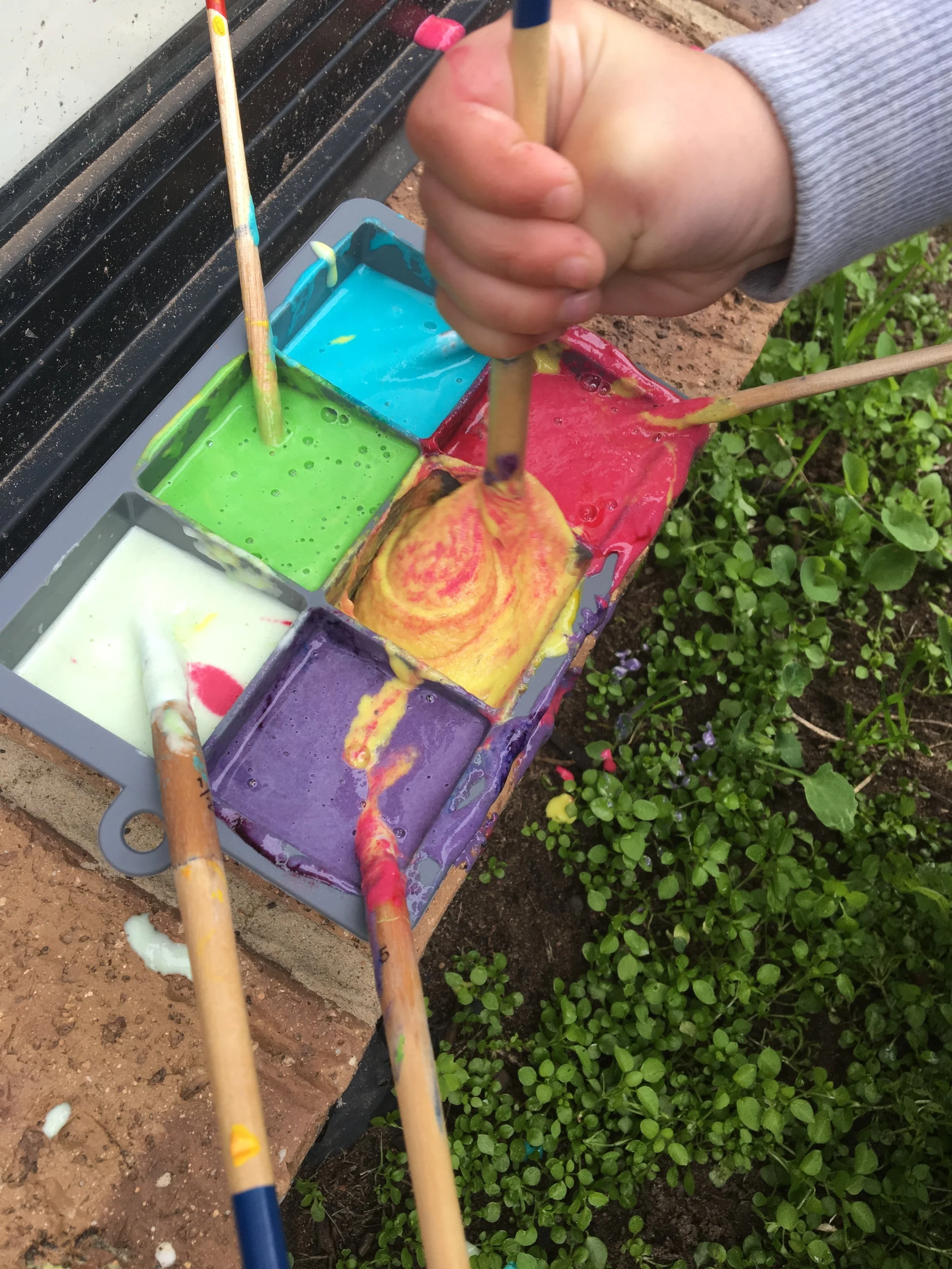Natural DIY Paint
Chances are if you have a baby, toddler or child you are familiar with the joys of painting. Using paint to create is a simple, fuss free activity that is fun for all ages!! While the process can be messy (that’s half the fun!!) it is easy enough to clean up and has unlimited variations to keep things interesting for little ones. Babies and toddlers enjoy exploring the senses through finger painting, while an older child may like to be more specific and use a range tools such as sponges or paint brushes to create a more detailed masterpiece. The options really are endless!
Traditional paints such as poster or acrylic paint can be purchased quite easily and cheaply from art shops, department stores or even $2 shops. However, if you are interested in even cheaper and more natural alternatives which are safe for all ages, there are various ways to make your very own paint at home! A quick google search will open up a whole world of recipes and ideas to inspire you - but it can be a bit daunting and even time consuming to wade through hundreds of websites to find exactly what you’re after. So, to help take some of the guess work out of this activity, I have compiled some of my favourite home made paint options below.
These are very simple recipes that I have tried and tested, and have found to be a bit hit with all ages. Each recipe calls for some food dye to colour your paint - store bought food dye works just fine but I will put instructions for natural ways to create vibrant colours using food based dyes at the end of this blog (it’s much easier than it sounds!).
Washable window paint
What you’ll need:
1 cup plain flour
1 cup water
3-6 tablespoons of dish washing liquid
Food dye
What to do:
Mix the flour and water together to make a thick paste like consistency, then slowly add the dish washing liquid and stir to combine. The mixture should foam up ever so slightly and become a little airy. Divide the mixture into seperate bowls (one bowl per colour) and begin to add the food dye. You may like to keep it simple by using just one or two colours, or create a whole rainbow… in my experience they will all end up being mixed together anyway! You can leave the dish washing liquid out if you wish, it just helps to create a smooth, foamy texture and makes it easier to wash off the windows.
Edible finger paint
What you’ll need:
Yoghurt (cheap, unflavoured yoghurt works fine, and dairy free yoghurt can be used if necessary)
Food dye
What to do:
Divide yoghurt into a few portions, add colours and mix! That’s it! You can use as much or as little food colouring as you like, but a ratio of about 1/3 cup yoghurt and 2 drops of colour is a good starting point. Generally speaking, less colour = more pastel shades, more colour = more vibrant shades, but this can depend on the type of food dye you’re using and how thick the yoghurt is so you will need to experiment a little. Once you’ve reached the colour you’re happy with, you’re ready to get painting. I particularly love this paint as it is suitable for babies as young as 6 months - and won’t matter if they eat some (hint - they probably will!!) - so pop a few blobs straight onto the high chair or table and let the fun begin!
** Please be mindful when using this recipe that dairy is a common allergen and alternatives such as soy and coconut may also cause issues for some children - so I would suggest holding off until you have ruled out an allergy or intolerance for your child. Speak to a health professional for the most up-to date advice on introducing common allergy foods, as they do change regularly.
Cornflour paint coloured with food-based dyes was a bit hit at Nature play
Cornflour “chalk” paint:
What you’ll need:
1 cup cornflour
Food dye
Water
What to do:
Place the cornflour in a bowl, and slowly add water until it thickens to form a paint like consistency. There is no exact measurement for this paint, so you can make it as thick or as runny as you like. Once you’ve reached a consistency that you’re happy with, divide the mixture into a few bowls and add the food dye. I particularly love this recipe for painting outside - as it dries with a “chalky” texture and looks wonderful on trees trunks and sticks. It will also work well on thick craft paper or cardboard.
As you can see, these recipes are all very simple and most of the ingredients are probably already in your pantry! The recipes are forgiving, so if you happen to use more or less of one ingredient it really won’t matter too much at all. Each recipe has its own unique texture and consistency - both wet and once it dries, so in addition to the fun of painting, they double as a wonderful sensory play experience. Creating your own paint is a wonderful experience that you and your child can share, which opens up a range of learning opportunities including gross and fine motor skills, colour recognition and hand eye coordination.
Keep in mind that these paints are designed for exploring the fun, sensory and creative aspects of painting. They can’t be stored in the cupboard for months on end like traditional paint and they may not look as glossy and vibrant on a canvas but they will help you create joyful moments and lasting memories with your child - and that’s a big tick in my book!
Painting the trees a vibrant beetroot purple
As an alternative to store-bought food dye, there are many options to create natural food based colours for your paint. Below are just a couple which I have used successfully. Of course being natural and food based, the colour and texture will vary and may change the consistency of your paint but that is all part of the magic!
Blueberries - simply blend 1/2 cup of frozen blueberries with a dash of water until smooth. Pass through a sieve and add the remaining liquid to your paint.
Beetroot - blend 2 beetroot (I used canned but fresh should work too) with a dash of water or the liquid from the can. Pass through a sieve and add the remaining liquid to your paint. This is my personal favourite as the colour is just so vibrant!
Turmeric - add approximately 1 tablespoon of turmeric powder to 1/2 cup paint mixture. You may find you need more or less depending on the colour you're after.
Spinach - Blend 1-2 cups spinach with a dash of water until relatively smooth (this mixture will remain quite thin and may seperate). Pass through a sieve and add the remaining liquid to your paint.
Cacao - add 1-2 table spoons of cacao powder to your paint mixture
Turmeric, blueberries, beetroot and spinach make wonderful natural food dyes!
Happy creating!








